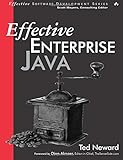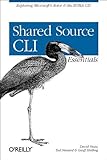Gateway Software Symposium
May 13 - 15, 2011
Ted Neward
Presentations
| Fri 1:15 PM | Busy Java Developer's Guide to Java 7 | |
| Fri 3:15 PM | Pragmatic Architecture | |
| Fri 5:00 PM | Architectural Kata Workshop | |
| Sat 11:00 AM | The Busy Java Developer's Guide to Akka | |
| Sat 1:30 PM | Busy Java Developer's Guide to Guava | |
| Sat 3:15 PM | Busy Java Developer's Guide to Android: Basics | |
| Sun 11:00 AM | Busy Developer's Guide to CouchDB | |
| Sun 2:15 PM | Busy Java Developer's Guide to Game Design | |
| Sun 4:00 PM | Busy Java Developer's Guide to Games |
Books
Professional F# 2.0
This is a book on the F# programming language.On the surface of things, that is an intuitively obvious statement, given the title of this book. However, despite the apparent redundancy in saying it aloud, the sentence above elegantly describes what this book is about: The authors are not attempting to teach developers how to accomplish tasks from other languages in this one, nor are they attempting to evangelize the language or its feature set or its use "over" other languages. They assume that you are considering this book because you have an interest in learning the F# language: its syntax, its semantics, its pros and cons, and its use in concert with other parts of the .NET ecosystem.
The intended reader is a .NET developer, familiar with at least one of the programming languages in the .NET ecosystem. That language might be C# or Visual Basic, or perhaps C++/CLI, IronPython or IronRuby.
Effective Enterprise Java
"With this book, Ted Neward helps you make the leap from being a good Java enterprise developer to a great developer!"
—John Crupi, Sun Distinguished Engineer coauthor, Core J2EE Patterns
If you want to build better Java enterprise applications and work more efficiently, look no further. Inside, you will find an accessible guide to the nuances of Java 2 Platform, Enterprise Edition (J2EE) development. Learn how to:
- Use in-process or local storage to avoid the network, see item 44
- Set lower isolation levels for better transactional throughput, see item 35
- Use Web services for open integration, see item 22
- Consider your lookup carefully, see item 16
- Pre-generate content to minimize processing, see item 55
- Utilize role-based authorization, see item 63
- Be robust in the face of failure, see item 7
- Employ independent JREs for side-by-side versioning, see item 69
Ted Neward provides you with 75 easily digestible tips that will help you master J2EE development on a systemic and architectural level. His panoramic look at the good, the bad, and the ugly aspects of J2EE development will address your most pressing concerns. Learn how to design your enterprise systems so they adapt to future demands. Improve the efficiency of your code without compromising its correctness. Discover how to implement sophisticated functionality that is not directly supported by the language or platform. After reading Effective Enterprise Java , you will know how to design and implement better, more scalable enterprise-scope Java software systems.
C # in a Nutshell, Second Edition
C# in a Nutshell was inevitable, much like the dawn or your liability for income tax. As the C# language has gathered speed--it's one of the languages that Microsoft encourages you to use for .NET development--its users have anticipated the release of an authoritative reference for the language and its key APIs. That's what this book is: a reference, meant to give you a few chapters on basic structure and syntax before launching into categorized and alphabetized listings of classes and their members. It's sufficiently well written and organized that, given experience with other distributed application environments and some knowledge of .NET, you could learn the language from this book alone. However, this is not a tutorial for people new to Microsoft programming, or new to network computing.The syntax guide is clear and concise, with brief statements of what operators, data structures, and syntax elements are for. There also are examples (both generic and with illustrative data) in this section. The API reference is organized by namespace (System, System.Collections, System.Reflection, System.Xml, and so on), with each section containing an alphabetical list of members. Each listing includes syntax guides to the element's constructors, methods, and properties, as well as a hierarchy statement and lists of other classes from which instances of the current member is returned and to which it is passed. Don't look for examples in the API reference, but the author's prose statements of what classes are for should help you along the way to a working application. --David Wall
Topics covered: The key System namespaces of the C# programming language and their most important members, covered in API reference format. Sections deal with (among others) System, System.Collections, System.Net, System.Net.Sockets, System.Runtime.Interopservices, and System.Xml. There's also a syntax guide and references to regular expressions and data marshaling in the C# language.
Shared Source CLI Essentials
Microsoft's Shared Source CLI (code-named "Rotor") is the publicly available implementation of the ECMA Common Language Infrastructure (CLI) and the ECMA C# language specification. Loaded with three million lines of source code, it presents a wealth of programming language technology that targets developers interested in the internal workings of the Microsoft .NET Framework, academics working with advanced compiler technology, and people developing their own CLI implementations. The CLI, at its heart, is an approach to building software that enables code from many independent sources to co-exist and interoperate safely.Shared Source CLI Essentials is a companion guide to Rotor's code. This concise and insightful volume provides a road map for anyone wishing to navigate, understand, or alter the Shared Source CLI code. This book illustrates the design principles used in the CLI standard and discusses the complexities involved when building virtual machines. Included with the book is a CD-ROM that contains all the source code and files.After introducing the CLI, its core concepts, and the Shared Source CLI implementation, Shared Source CLI Essentials covers these topics:
- The CLI type system
- Component packaging and assemblies
- Type loading and JIT Compilation
- Managed code and the execution engine
- Garbage collection and memory management
- The Platform Adaptation Layer (PAL): a portability layer for Win32®, Mac OS® X, and FreeBSD






